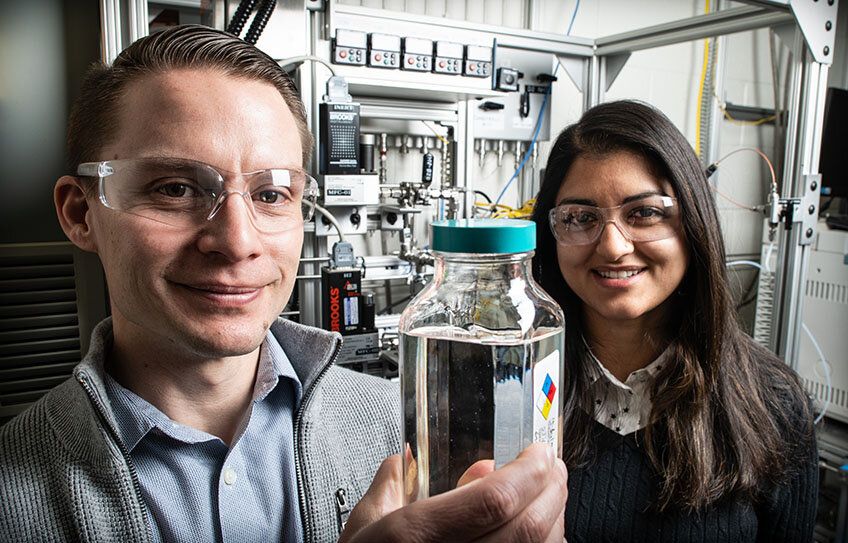The NREL scientists, along with colleagues at Yale University, Argonne National Laboratory, and Oak Ridge National Laboratory, are part of the Department of Energy’s Co-Optimization of Fuels & Engines (Co-Optima) initiative. Co-Optima’s research focuses on improving fuel economy and vehicle performance while also reducing emissions.
“If you look at biomass, 30% of it is oxygen,” said Derek Vardon, a senior research engineer at NREL and corresponding author of a new paper detailing the Co-Optima research project. “If we can figure out clever ways to keep it around and tailor how it’s incorporated in the fuel, you can get a lot more out of biomass and improve the performance of diesel fuel.” The molecule, 4-butoxyheptane, contains oxygen while conventional petroleum-derived diesel fuel is comprised of hydrocarbons. The presence of oxygen significantly reduces the intrinsic sooting tendency of the fuel upon burning.
The paper, “Performance-advantaged ether diesel bioblendstock production by a priori design,” appears in the journal Proceedings of the National Academy of Sciences. Vardon’s co-authors from NREL are Nabila Huq as the first author, with co-authors Xiangchen Huo, Glenn Hafenstine, Stephen Tifft, Jim Stunkel, Earl Christensen, Gina Fioroni, Lisa Fouts, Robert McCormick, Matthew Wiatrowski, Mary Biddy, Teresa Alleman, Peter St. John, and Seonah Kim.









Comments are closed.